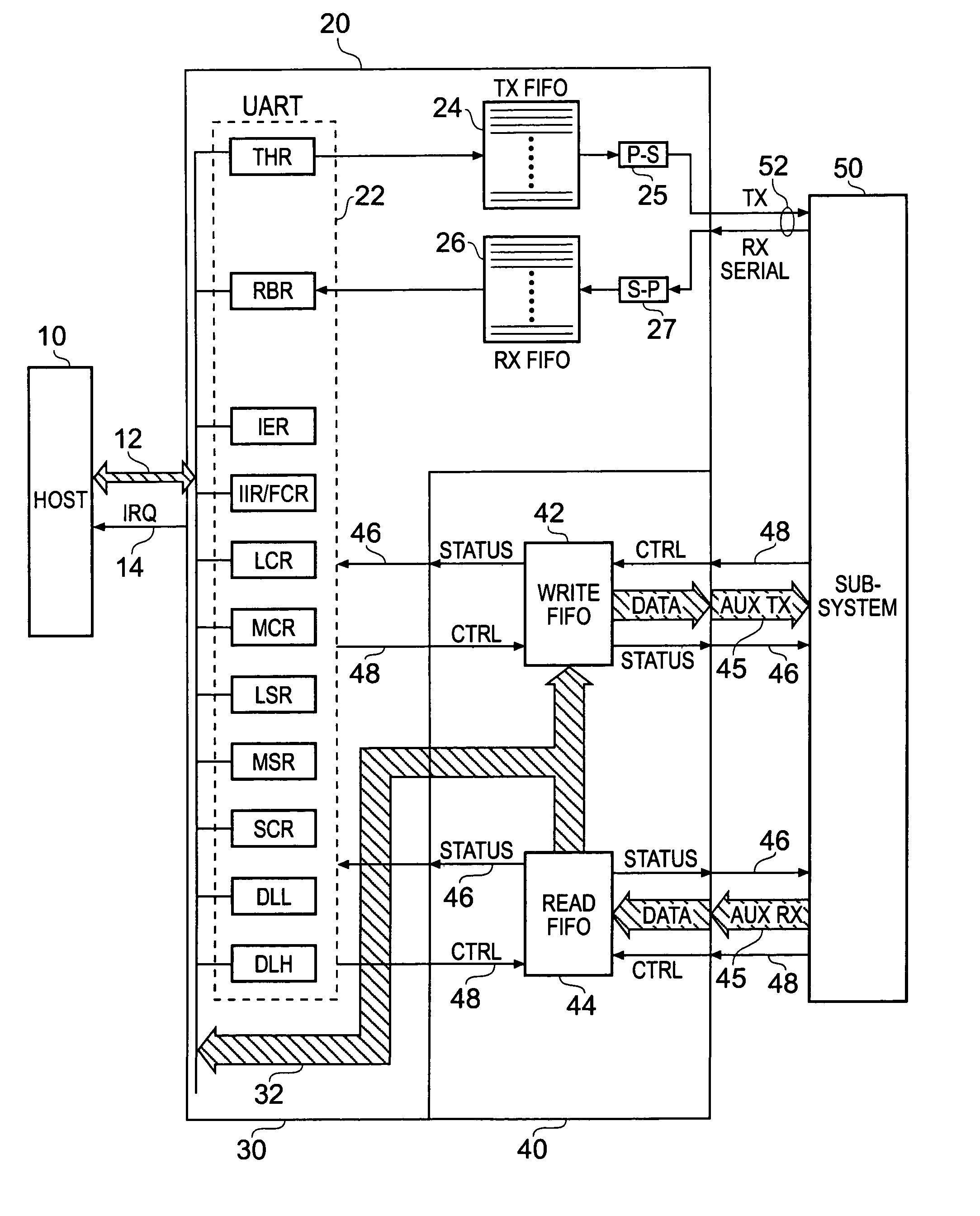High-throughput UART interfaces
a high-throughput, uart technology, applied in the direction of network traffic/resource management, data conversion, program control, etc., can solve the problems of data loss rather than degraded performance, transfer mechanism inherently impose speed limitations, internal transmit and receive fifo buffer size, etc., to improve the performance capabilities of 16550-type uarts and increase the fluctuation of device driver response tim
- Summary
- Abstract
- Description
- Claims
- Application Information
AI Technical Summary
Benefits of technology
Problems solved by technology
Method used
Image
Examples
application example 1
PCMCIA Wireless Card
[0082]FIG. 9 shows an example application of a PCMCIA wireless card connected to a host PC 10. The wireless card contains both the modified UART 20 and the subsystem 50 and connects to a host PC 10 through a PCMCIA bus 12 / 14. The subsystem 50 includes a wireless RF transceiver 60 with aerial 62 to connect to a subscriber network offering voice and data services. The legacy serial channel 30 with FIFOs 24 / 26 and the additional parallel channel 40 with internal bus 32 and supplementary FIFOs 42 / 44 are shown, with the same reference numerals being used as for FIG. 2 for the corresponding components.
[0083]The subscriber network could be GSM, GPRS, CMDA etc as widely used throughout the world for mobile telephony. Data services for these networks are growing in popularity to deliver additional “content” such as web pages, directory services, mapping data etc. As the bandwidth of these data services increases it becomes impractical to send the data over the conventiona...
application example 2
Compact Flash Card for Streaming Wireless Data to a PDA
[0086]FIG. 10 shows an example application in which a compact flash card is used to receive a proprietary wireless (or wired) data service. The compact flash card incorporates both the modified UART 20 and subsystem 50. The subsystem 50 has a wireless RF transceiver 60 with aerial 62 for communicating with the wireless data service. The subsystem 50 includes hardware for separating the parallel and serial channels in order to communicate with the auxiliary parallel and legacy serial channels 30 and 40 of the modified UART 20 respectively. The auxiliary parallel data channel uses supplementary FIFOs 42 / 44 and internal bus 32 to stream high rate data to the host PDA 10 over the compact flash bus 12 / 14. The data is transferred over a compact flash bus 12 / 14. The serial channel with the legacy FIFOs 24 / 26 is used to communicate with the card's internal decoder or microprocessor to allow it to be configured with operating parameters ...
PUM
 Login to View More
Login to View More Abstract
Description
Claims
Application Information
 Login to View More
Login to View More - R&D
- Intellectual Property
- Life Sciences
- Materials
- Tech Scout
- Unparalleled Data Quality
- Higher Quality Content
- 60% Fewer Hallucinations
Browse by: Latest US Patents, China's latest patents, Technical Efficacy Thesaurus, Application Domain, Technology Topic, Popular Technical Reports.
© 2025 PatSnap. All rights reserved.Legal|Privacy policy|Modern Slavery Act Transparency Statement|Sitemap|About US| Contact US: help@patsnap.com



